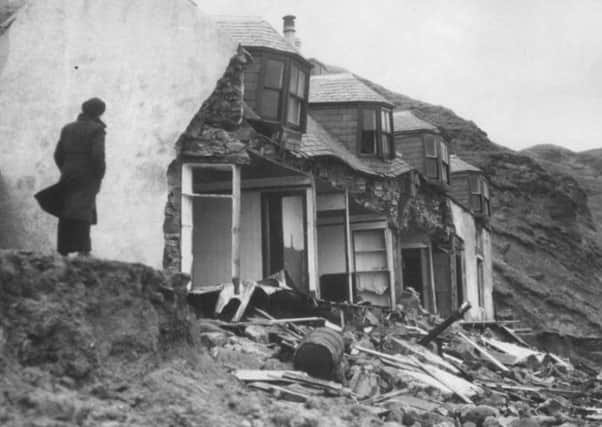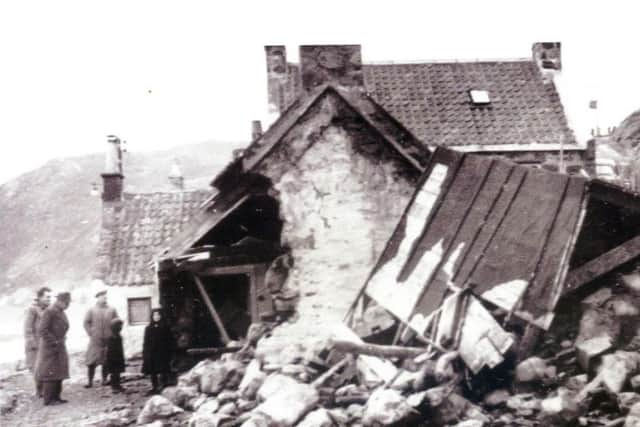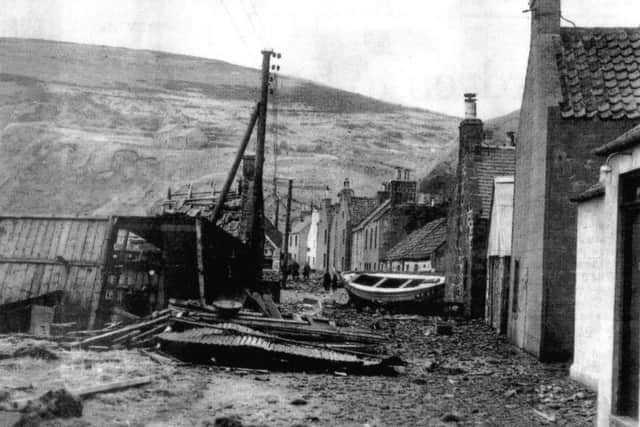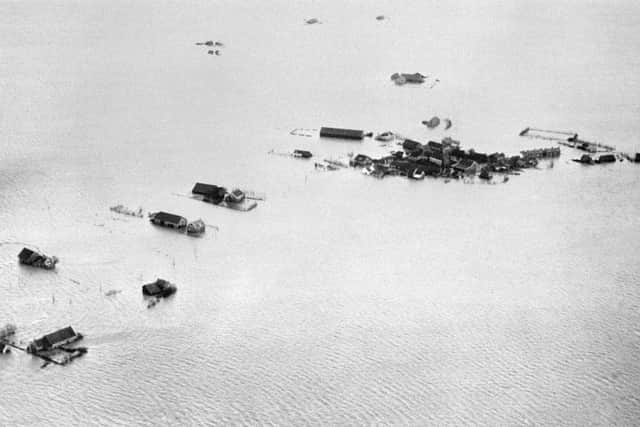The great North Sea flood that killed 2,500 people


Father was right. It was January 31, 1953 and the storm that was to create the North Sea Flood was well on its way as a deep Atlantic depression moved on its south westerly journey towards gales and high spring tides off the north coast of Scotland.
As the different forces collided, a series of devastating tidal surges followed with more than 2,000 lives claimed in Scotland, England and the Netherlands - which was by far the worst hit as waves pounded through defences in low-lying coastal areas.
Advertisement
Hide AdAdvertisement
Hide AdMore than 1,800 people were killed in The Netherlands alone.


Memories of that awful, fearful day and night linger on and the storm, described as the greatest natural disaster to hit Great Britain and The Netherlands during the 20th Century, has inspired Shorelines - a new music theatre work - which will premiere in the UK at the Sonica 2017 festival in Glasgow next month.
Produced by Glasgow’s Cryptic, it has been influenced by accounts like that of Mrs Hepburn, who watched sheds and garages wash down the street into the harbour and fronts of houses being removed by the force of the water.
Less than a mile away, the fishing village of Crovie was effectively abandoned as the slim line of shoreline cottages was battered by mountainous waves during the 17-hour storm.


Advertisement
Hide AdAdvertisement
Hide AdMrs Hepburn said: “At that time my father was home at lunchtime the piers were already covered in water and it wasn’t even high tide. Soon there was water everywhere.
“At Gardenstown, sheds and garages were washed away into the harbour and the wood from the boatyard was floating down the street.
“At Crovie, there was no where to run. Most people got out of their back windows and climbed up the brae. The village was never the same after the storm - most people didn’t go back to their homes. They were just left.”


At the beginning of the 20th Century, Crovie had been home to more than 400 people.
Advertisement
Hide AdAdvertisement
Hide AdThe devastation of the storm and flood was relentless. It claimed the lives of 133 lives on the Stranraer to Larne passenger ferry in what was then Britain’s worst maritime disaster since World War Two.
Damage ran to £50 million at 1953 prices, the equivalent of around £1.2 billion today.
Power stations, gasworks, roads, railways, sewage services and water services were put out of action with the aftermath of the storm long and hard.


At Banff, people were left without heat and sometimes light for several weeks after water entered the gasworks and carried it out to sea.
Advertisement
Hide AdAdvertisement
Hide AdAs winds climbed to 100mph and above, the roof of the Breadalbane Cinema at Caithness was ripped off and a waitress at Station Hotel in Elgin escaped with her life after a 15 foot chimney stack fell through the roof and into the dining room where she had been setting up for a wedding.
Thos who died in Scotland included forestry worker from Banff whose motorbike was hit by a tree. An elderly man died in Fraserburgh after a large wave knocked him into a wall. Two lobster fisherman - Harry and Harold Gear - died at sea after sailing out from the North East coast to check their lobster pots.
Josh Armstrong, Glasgow-based director of Shorelines, said the show explored the beauty and catastrophic power of the sea at a time of increased risk of rising water levels and floods from climate change.
Composed by Oiver Coats and performed by The Netherlands based Ragazze Quartet, the work recently had it world premiere at the Operadagen festival in Rotterdam, a city largely submerged by the 1953 flood.
Advertisement
Hide AdAdvertisement
Hide AdMr Armstrong said: “In the early stages I was interested in how the shoreline changes from a place of hope, where people wait by the shore for their loved ones, to a place of devastation and danger.


“I was discussing these ideas with the Dutch string quartet and she told me that her grandfather had always regretted that he couldn’t save more of his neighbours in 1953.
“Shorelines is very much a meditation of water and on its power and it is also about remembering those lives lost to the sea.”
Shorelines will be staged at the Tramway as part of the Sonica 2017 programme on November 1 and 2.
